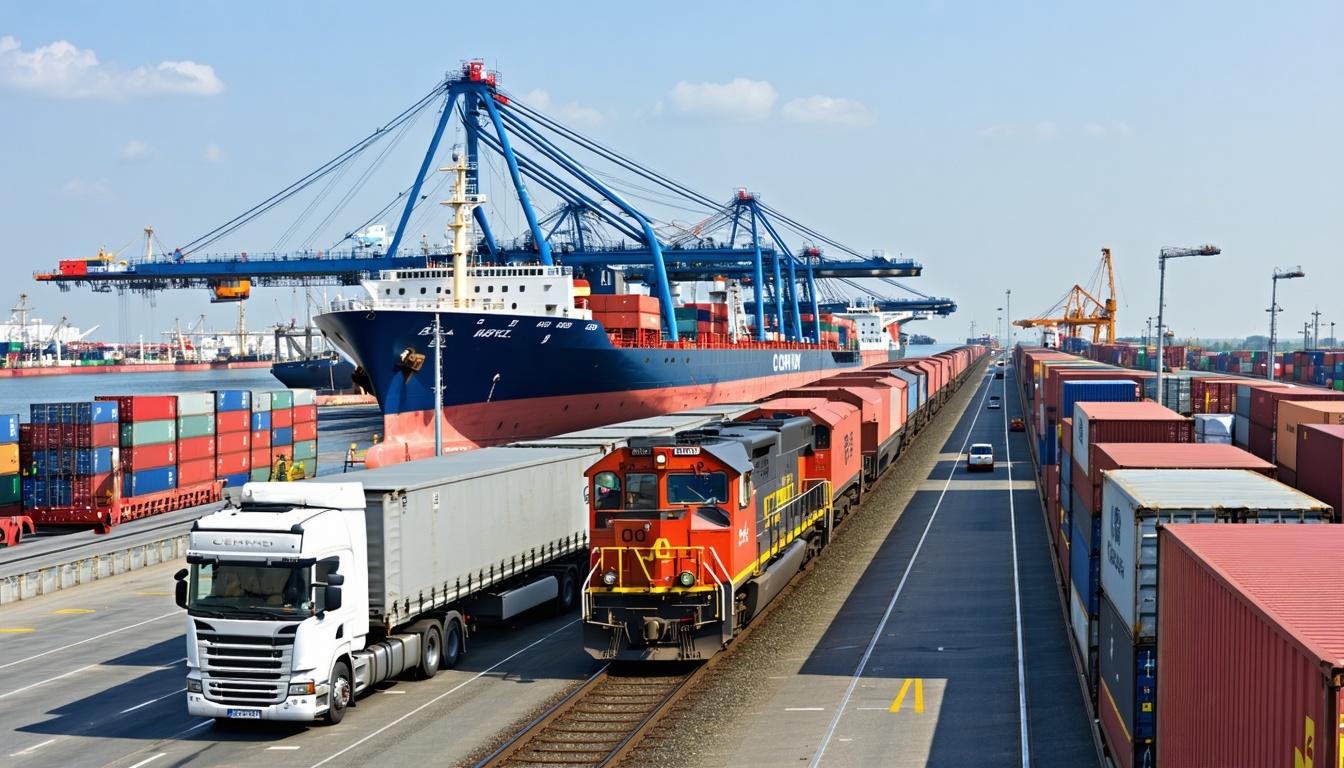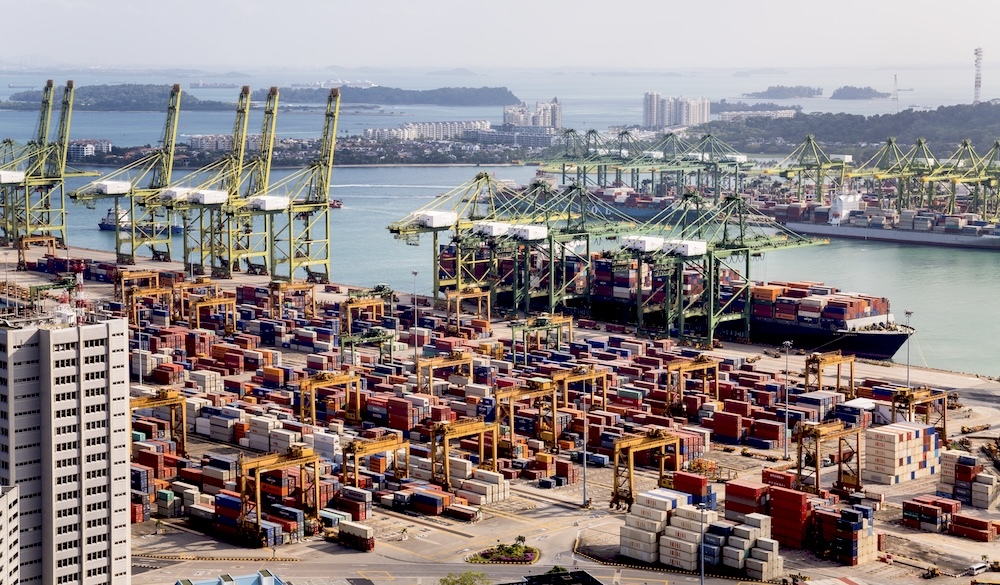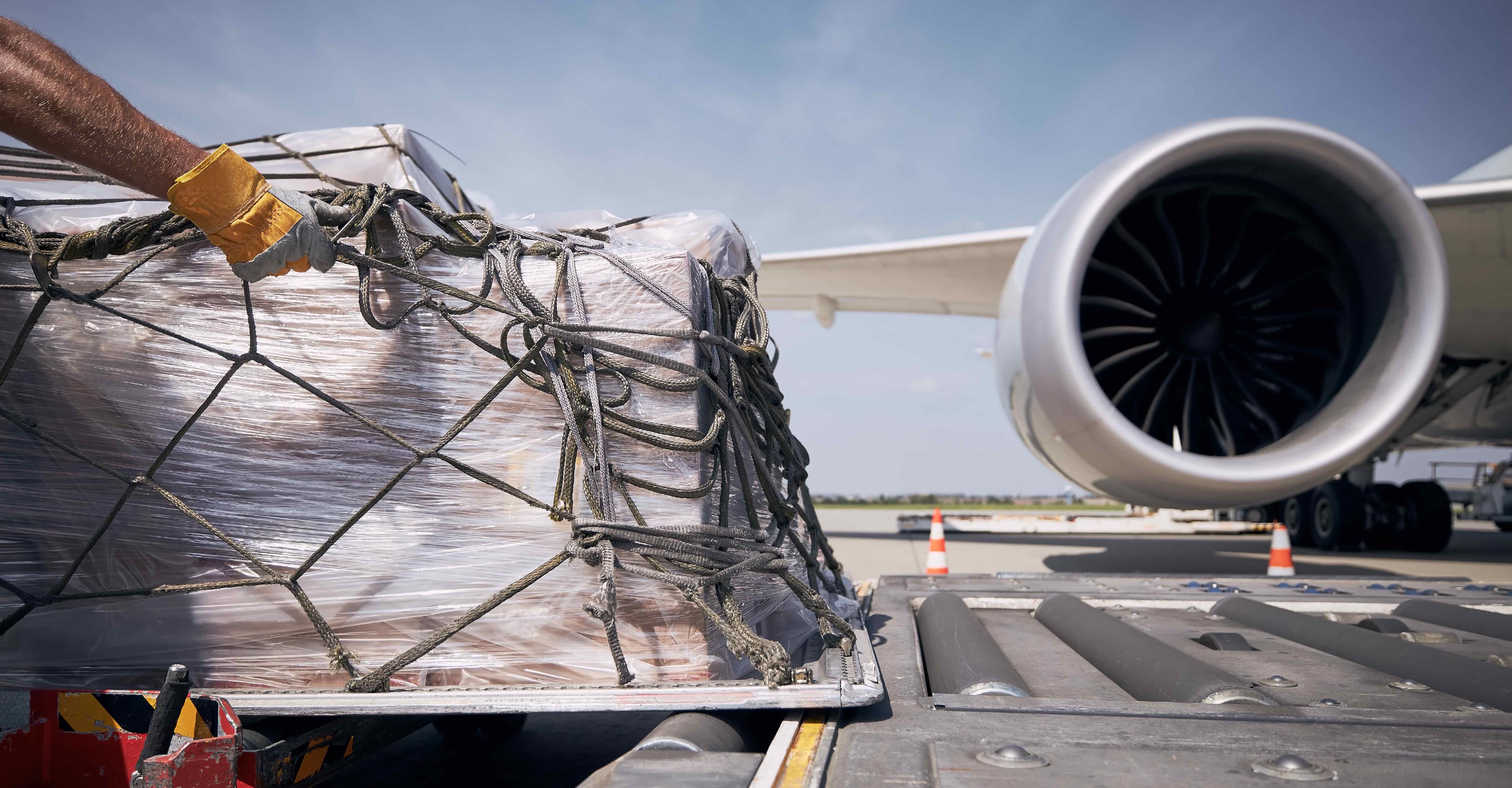Freight Transportation Services Supporting Maritime Shipping

Discover how land-based freight transportation services seamlessly support maritime shipping, ensuring goods move efficiently from origin to port of loading and from its port of discharge to its final destination.
The Benefits of Working with Liner Agents and Freight Forwarders to Create an Intermodal Solution
Liner agents and freight forwarders play a crucial role in the logistics chain, particularly in creating intermodal solutions that benefit customers. Liner agents, representing shipping lines, ensure that cargo is efficiently loaded onto vessels and manage the necessary documentation. Freight forwarders, on the other hand, coordinate the entire logistics process, including land transport, to ensure seamless movement of goods. By working hand in hand, these professionals can offer tailored services that meet specific customer needs, optimize transit times, and reduce costs.
The Vital Role of Trucking in Freight Transportation
Trucking is an essential component of freight transportation, particularly for delivering large format cargo to and from ports. The flexibility of trucking allows for more direct routes and last-mile delivery, ensuring that goods reach their final destination efficiently. It can also be a more cost effective option for short to medium distances. However, there are some drawbacks, such as traffic congestion, limited space availability and environmental impact. Despite these challenges, trucking remains a vital link in the logistics chain, offering unparalleled versatility and accessibility.
Rail Transport: The Backbone of Long-Distance Freight
Rail transport is often considered the backbone of long-distance freight due to its ability to move large volumes of cargo over extended distances efficiently. Trains are particularly advantageous for transporting bulk goods and large format cargo, offering cost effective and environmentally friendly solutions. However, the reliance on fixed schedules and routes can be a limitation of this form of transport and depending on the location of the stations, may require additional transport to the port or onto its final destination. Despite this, rail transport remains a critical component of the logistics network, providing reliable and scalable options for freight transportation.
Haulage to Inland Container Depots: Bridging the Gap
Haulage to inland container depots (ICDs) plays a crucial role in bridging the gap between maritime shipping and final delivery points. These depots serve as intermediate storage and processing facilities, allowing for the deconsolidation and distribution of cargo. By transporting containers from ports to ICDs, logistics providers can streamline operations, reduce congestion at ports, and improve overall supply chain efficiency.
Additionally, ICDs facilitate customs clearance processes, enabling faster and more efficient handling of goods. This not only enhances the speed of delivery but also reduces the risk of delays and associated costs. Overall, haulage to ICDs is a vital aspect of the logistics chain, ensuring that goods are moved seamlessly from ports to their final destinations.
Carrier Haulage vs Merchant Haulage
Carrier haulage and merchant haulage are two distinct approaches to land transportation in the logistics industry. Carrier haulage involves the shipping line or liner agent arranging and managing the inland transport of containers. This approach offers the advantage of a single point of contact and potentially lower costs due to the shipping line's established network and volume discounts.
In contrast, merchant haulage involves the customer or freight forwarder arranging the inland transport independently. This approach offers greater flexibility and control over the logistics process, allowing for customized solutions that meet specific requirements. Both options have their merits, and the choice between carrier haulage and merchant haulage often depends on the specific needs and preferences of the customer.
Integrating Multimodal Transport for Maximum Efficiency
Integrating multimodal transport involves combining different modes of transportation, such as trucking, rail, and maritime shipping, to create a seamless and efficient logistics solution. This approach leverages the strengths of each mode, optimizing cost, transit time, and environmental impact.
For example, goods may be transported by truck from a factory to a rail terminal, shipped by train to a port, and then loaded onto a vessel for international transport. By coordinating these different modes, logistics providers can offer comprehensive solutions that meet the diverse needs of their customers. Multimodal transport not only enhances efficiency but also provides greater flexibility and resilience in the supply chain.
Future Trends in Freight Transportation Supporting Maritime Shipping
The logistics industry is continuously evolving, and several future trends are set to shape the landscape of freight transportation. One significant trend is the increasing adoption of digital technologies, such as blockchain, IoT, and AI, which enhance transparency, traceability, and efficiency in the logistics chain.
Another trend is the growing focus on sustainability and reducing the environmental impact of transportation. This includes the development of greener technologies, such as electric trucks and trains, and the implementation of more efficient routing and scheduling practices. Additionally, the expansion of global trade networks and the rise of e-commerce are driving demand for more flexible and responsive logistics solutions. By staying ahead of these trends, logistics providers can continue to support maritime shipping and meet the evolving needs of their customers.



